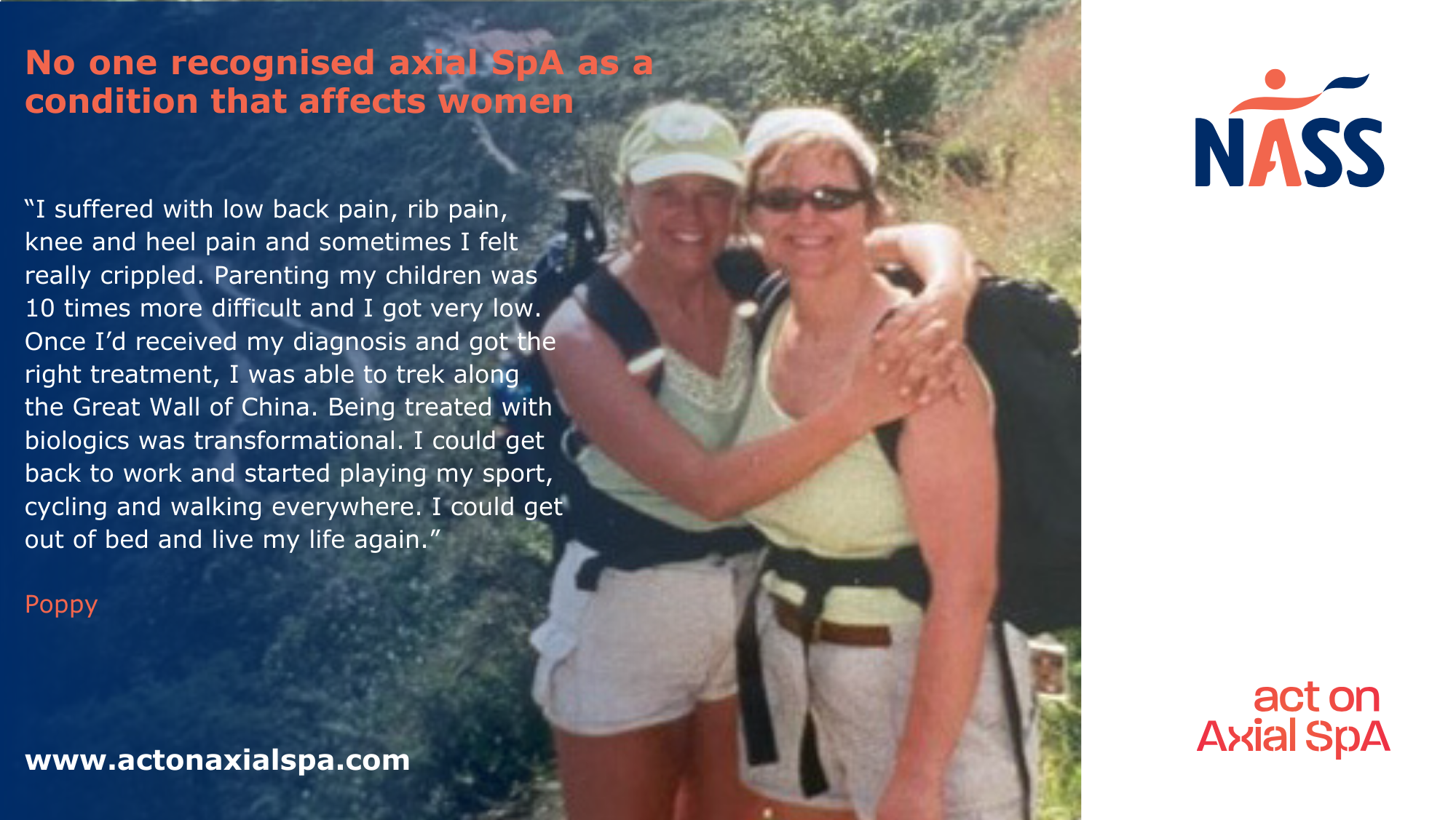
“I suffered with low back pain, rib pain, knee and heel pain and sometimes I felt really crippled. Parenting my children was 10 times more difficult and I got very low. Once I’d received my diagnosis and got the right treatment, I was able to trek along the Great Wall of China.”
It took me 16 years to be diagnosed with axial spondyloarthritis. Back then, I experienced crippling pain and I struggled as a nurse and as a mother.
I’ve always been sporty and I put my aches and pains down to that. But when I was 18 and in my first year of nurse training back in 1978, I started to get a huge amount of low back pain.
Getting out of bed became really difficult. Even then, I waited a year to see a doctor. He said it was down to my nursing and having to lift patients. It sounded reasonable – but I nearly gave up my training.
Then, at age 25, I found myself unable to walk 16 weeks into my first pregnancy. My back pain was excruciating. I had to use crutches, but the physio said it was because I was pregnant.
I went on to have three more babies and had severe back pain with each pregnancy. I thought it was because they were big babies and having four in five years.
Back then, nobody recognised axial SpA as a disease that affects women. The osteopath said I was out of alignment! The physios manipulated my spine and legs. I was fitted with a spinal jacket to no avail, it did not improve; in fact, it got worse. Nobody used the words axial spondyloarthritis as a probable cause.
By this point I was suffering heel pain, rib pain, lower back pain, knee pain and some days I could barely walk.
Parenting my children became 10 times more difficult. I was short-tempered and constantly in pain. I got very low. Just getting through the day was so hard. I couldn’t do the exercise classes I wanted to with my friends or play tennis.
Being an active person, it had a huge impact on how I led my life. It completely depressed me, but I didn’t go to the doctor. I felt like I would be labelled a hypochondriac.
Finally, at the age of 34, because I was struggling to get out of bed and lift my children, my ex-husband said, “let’s get you to see a rheumatologist”. I had an appointment in Swindon and tested positive for HLA B27, a gene that is sometimes seen in patients with axial SpA. It was confirmed I had the condition.
In one way, I was happy to finally know but back then the rheumatologist said there was nothing they could do because it was a chronic life-long condition. I had to keep active and take painkillers and anti-inflammatories; easier said than done!
Three years later, I went to my GP and told him I couldn’t function. I was referred to a new rheumatologist and was given a new treatment – biologics.
“Being treated with biologics was transformational. I could get back to work and started playing my sport, cycling and walking everywhere. I could get out of bed and live my life again”
Two years later, I started to trek for charity. I began with the Great Wall of China, just after I was 40, and the year after that I climbed Kilimanjaro and later, the High Inca Trail, Everest Base Camp and even the Patagonian Circuit.
None of this means I don’t have still have flares that cause extreme pain and tiredness and bad days. My trekking days may be over. I feel blessed to have done it.

